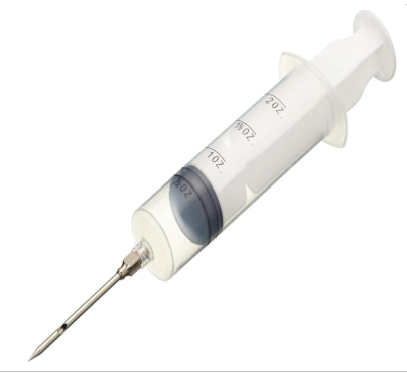Invasive Plants
Free Checklist: What I Always Check Outdoors Before Buying or Renovating Property
Japanese Knotweed • Asbestos • Dumped Waste • Broken Drains can all be hidden deal-breakers many buyers miss
When I inspect a property, especially with unkempt land or a big garden, I always check for hidden dangers that many buyers overlook.
I’ve created this checklist and inspection guide to help you do the same.
In this page, I show you exactly what I look for:
- How I spot Japanese knotweed before it kills a deal
- Why fly-tipped waste and asbestos cement sheets could cost thousands
- How to detect broken or sunken drains early
- The DIY method I use to inject and destroy knotweed safely
- What lenders will ask if they suspect invasive plants or environmental issues
- The checklist I use on every outdoor walkaround (tick-box ready for you to view)
✅ You’ll also learn "What I Always Look for in Gardens During a Property Survey and Why Invasive Plants Are Just the Start of the Nightmare" plus guidance on how I negotiate or walk away when something looks wrong.
What I Always Look for in Gardens During a Property Survey and Why Invasive Plants Can Be Just the Start of the Nightmare.
When I visit a property and especially one with a big garden or overgrown land, I don’t just look at the walls and roof. I walk every inch of the outdoor space. In fact, it’s often in these neglected corners, weed choked fences and old sheds where real problems and massive costs can hide.
I’ve seen innocent puyers learn the hard way that you can spend thousands or end up with a legal mess because they missed what was buried or growing between the garden shed and the back fence.
🕵️♂️ What I Look For Outdoors During My First Survey Visit
When I’m doing a walkaround, here’s exactly what I look for:
1. Invasive Plants
- Japanese knotweed it has purple flecked bamboo like stems and heart-shaped leaves
- Buddleia, or butterfly bush, is a hardy shrub with fragrant flower spikes that attract butterflies but is also an invasive plant that spreads rapidly and outcompetes native species
- Giant hogweed a huge flowering weed near ditches or shaded corners
- Himalayan balsam are aggressive, fast-spreading plants near water
- Rhododendron ponticum are beautiful but highly invasive in woodland edges If I see any of these, I start taking photos immediately and flag it as a potential deal-breaker.
- I’ve also started watching out for bamboo, which is quickly becoming the “next knotweed.” While it looks decorative, many bamboo species are highly invasive, spreading aggressively underground and damaging drains, patios, and even foundations. Lenders are starting to take it seriously and especially when it’s planted close to the property. If I see mature bamboo without a proper root barrier, it raises a red flag immediately.
2. Broken or Blocked Drains
- I look for standing water, sunken ground, or unexpected greenery in lines across grass as these are all signs a drain or soakaway has failed.
- I open inspection chambers (if safe) to see if anything is backed up or cracked or if there are any signs of cracks or roots in the drain.
3. Old Asbestos Cement Sheets
- Around sheds, garages, and outbuildings, I check for corrugated grey sheets as these are often old roof panels or cladding.
- If they’re damaged, I don’t touch them. That’s asbestos and I can’t dispose of it casually or legally without licensed handlers.
4. Dumped Rubbish in Overgrown Areas
- Fly-tipped fridges, tyres, mattresses, gas bottles, even old trampolines... I’ve seen it all.
- Usually with auction purchases, once it’s on your land, you’re liable to remove it, even if the previous owner left it.
- Clearing and disposing of illegal rubbish can cost hundreds and delay renovation.
If I go in blind and miss this stuff it could have huge financial and legal ramifications:
- I could lose a buyer when a survey flags Japanese knotweed
- I might end up paying for asbestos removal or soil remediation
- I may inherit a garden full of controlled waste
- Lenders can pull a mortgage offer if risks aren’t addressed
- I will face legal responsibility for any invasive species or asbestos disposal
The scary part is that at auctions particularly, the purchaser is liable the moment the purchase is completed.
What I Do When I Find Knotweed? My successful DIY Stem Injection Method
Sometimes, if the knotweed patch is small and its for one of my BTL properties, I do it myself. If its for a flip property I always pay for professional eradication as it comes with a ten year guarantee and makes the property mortgageable again. I treat Japanese Knotweed myself using a method that I know works: stem injection.
What I Use
- A disposable or reusable syringe : About 50ml capacity with a sharp, strong needle. I actually use a meat injector syringe because they're cheap at around ten pounds, they hold sufficient weed killer and have a very robust needle. This one is similar to what I use and you will notice that the hole is at the side of the needle and not at the end. This is so as the stems are being injected the hole would become clogged if it were at the end of the needle. You can actually purchase purpose made injector equipment from Amazon for about £65 but I have never seen the need as a meat injector for the comparatively small areas I work on in gardens is plenty good enough.

- A bottle of Roundup ProActive or Glyphosate 360 (Both are professional strength glyphosate weedkillers available in the UK. Roundup ProActive is widely used by contractors.) Dont buy cheap weedkillers. In my experience they dont work.... Unbelievable but true. Japanese Knotweed is very resilient.
- Thick rubber gloves
- Eye protection
- A marker pen (to mark injected stems)
- A small drill bit or brawdawl to make holes if stems are tough
- Plastic sheeting (to protect nearby plants)
Step-by-Step: How I Inject the Knotweed Stems
-
Wait for the right time of year
Late summer to early autumn is best as that’s when the plant draws nutrients (and poison) down into its rhizomes. -
Find mature, upright stems
I target the big green hollow stems, not the new baby shoots. These are the transport pipes to the root system. -
Make the injection point
I insert the needle about 20 cm above ground level directly into the hollow part of the stem. Sometimes I gently drill a tiny hole first if the stem is woody. -
Inject 2–5 ml of glyphosate solution into each stem
I fill each with the undiluted or slightly diluted glyphosate (check the strength on the bottle. I aim for at least 360 g/L). I mark each stem with pen once done so I don’t repeat it. -
Leave the plant standing
I don’t cut it back. I leave the stems standing for several weeks so the poison moves down to the roots. Cutting too early ruins the process. -
Repeat in 6 to 8 weeks if needed
If the plant is still strong, I repeat the process. Over time, the stems shrivel, turn brown, and die.
- I never let glyphosate touch other plants, grass, or water. It kills anything green.
- I never compost knotweed as all waste must be burned or sent to licensed landfill.
- I wear gloves and goggles because glyphosate is a chemical herbicide.
- I never dispose of leftovers in drains or soil . I store and label everything clearly.
Why I Like the Injection Method
- It targets only the knotweed and not surrounding plants.
- It’s legal for small-scale use on your own land.
- It’s surprisingly satisfying to see those stems die from within.
What I Do With Treated Stems
Once they’re fully dead, I cut them low, bag them up, and either burn them on-site (if permitted) or send them off as controlled waste. I never dig out live roots as it just spreads the plant.
Wouldn't the Solicitors be advised of Invasive plants on the property?
Yes and No
Sellers are bound to answer all enquiries in good faith and on what they know about the property.
A lot of repossession and auction properties are bought without the benefit of full enquiries and the seller (in repossessions that’s usually a Building Society or other Lender) may have no idea of the true state of the property.
So it is also incumbent on purchasers to make their own enquiries.
I always ensure that I make full inspections for all invasive plants and their traces.
One Last Tip
Even after I think it’s gone, I monitor the area for two growing seasons. If anything comes back, I treat it again very aggressively.
How I Negotiate When I Find Invasive Plants
If I discover Japanese knotweed or any other invasive species during a site visit, I don’t walk away immediately but I negotiate later into the process when there is less chance of a seller pulling out. I start by getting a quote from a licensed eradication contractor who offers a 10-year insurance backed treatment plan. Once I have that in writing, I go back to the seller and make it clear: this is a material defect affecting mortgageability and resale value. I subtract the full treatment cost and a little extra from my offer. If the infestation is severe or close to boundaries, I factor in long-term monitoring costs too. I’ve knocked £5,000 to £10,000 off asking prices this way. The key is to back everything up with professional evidence and not subjective opinion.
Final Thought
Most people look at a property’s layout and decor. I never omit a good look in the garden, behind the shed, and around the bins.
That’s where serious hidden costs can live.
These are the places where Japanese knotweed thrives, where asbestos lingers unnoticed, and where broken pipes quietly destroy soil structure.
If I don’t see a clean, stable, manageable garden then I walk away or renegotiate hard.
✅ Outdoor Risk Checklist
What I Personally Check Outside Before Buying or Renovating Property
Invasive Plants and Root Risks
- I inspected all garden edges, fences, and walls for Japanese knotweed
- I look for signs of giant hogweed, Himalayan balsam, or rhododendron ponticum
- I note any bamboo growing close to structures or drains
- I check the garden boundary for invasive plants on neighbouring land
- If anything suspicious is found, I take clear photos and location notes
- I obtain a licensed eradication contractor quote with a 10-year guarantee
- I factored treatment costs into my price negotiation with the seller
Structural and Ground Stability
- I walk the garden to check for sunken areas or unexpected soft patches
- I look for raised or cracked paving, which could indicate root damage or ground movement
- I inspect retaining walls and garden steps for bulging, leaning, or crumbling
Drainage and Water
- I locate and lift inspection chambers to check for blockages, roots or cracked pipework
- I checked for signs of surface water pooling or poor run-off
- I checked gutter downpipes and soakaways for proper flow and discharge
- I looked for green growth or moss lines that suggest underground leaks
- I review the drainage plan, if available, to identify old or unrecorded pipework
Environmental Hazards
- I inspect sheds, outbuildings, and garage roofs for asbestos cement sheets
- I look for damaged or broken asbestos panels, especially grey, fibrous ones
- I avoid touching or disturbing any material that could be asbestos
- I confirm whether previous owners declared any asbestos presence or removal
Dumped Waste and Fly-Tipping
- I check overgrown areas, bushes, and behind sheds for dumped items
- I note any fridges, tyres, building rubble, gas bottles, or household waste
- I confirm who is responsible for removing the rubbish (seller or buyer)
- I obtain a quote for waste removal, if required
Site Access and Legal Boundaries
- I inspect the garden boundary for missing or disputed fences
- I ask the seller to confirm ownership of boundaries (title plan or deeds)
- I walk the right of way areas and check for any obstructions or encroachments
- I make sure there is legal access to drains, bins, or rear pathways
- I confirm whether gates or shared access areas are used or contested by neighbours
Practical & Maintenance Concerns
- I note how much vegetation and clearance would be needed before renovation starts
- I check whether garden trees may need TPO (Tree Preservation Order) clearance
- I look for excessive ivy or creeping plants growing into the building
- I confirmed whether there’s space and permission for skips or scaffold access
Documentation
- I take clear photos of every concern
- I mark plant or damage locations on a printed site plan or sketch
- I create a summary list of potential costs (treatment, removal, repair)
- I discuss all outdoor risks with my solicitor before exchange of contracts
This checklist has helped me avoid expensive surprises, from hidden knotweed and failing drains to costly waste removal. I use it on every site visit, and I update it regularly as lenders tighten their risk criteria.
Want more tips from a real life case study?
This checklist is part of my renovation guide, built from experience working across multiple UK properties.
If you're planning to renovate, flip, or develop then grab your full copy here:

